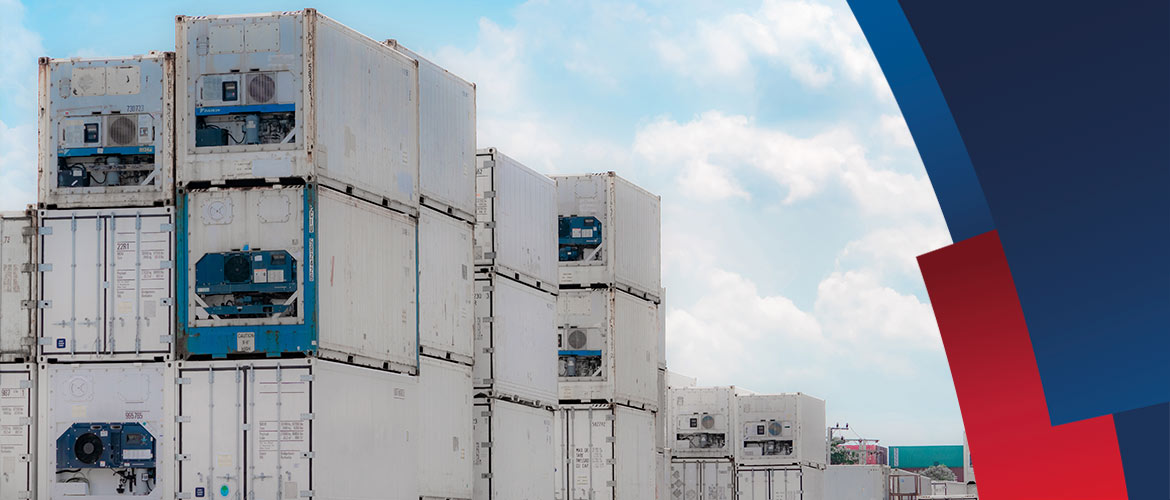Reefer containers allow cargo to be temperature-controlled from pickup to drop-off. These containers can carry frozen foods, meat and fresh produce, but also many other products like electronic equipment, flowers, medicine, cosmetics and fine art are also hauled in reefers.
Refrigerated container transportation is characterized by cold chains, which are becoming increasingly complex and dynamic with sourcing locations being changed increasingly quickly and purchase orders becoming smaller and more frequent.
Let’s look at all the details of reefer operations.
What is temperature-controlled transport?
Temperature-controlled transport is any transport that takes place within a specific temperature or temperature range and uses special mechanisms to protect the goods to be transported. It includes all processes related to the preparation of orders, transport and delivery of goods under special cooling conditions.
Types of controlled-temperature shipping
Controlled-temperature shipments can be classified depending on the temperature required to keep them fresh and safe:
- Cold or refrigerated shipments (2°C to 8°C). For products that need to be kept at a low temperature without dipping below-zero temperatures.
- Frozen shipments (-2ºC/-22°C). The products need to be frozen at a consistent temperature until their delivery.
- Shipments with dry ice (-80ºC). Typically used for air shipments. By not using liquid/gas as a cooling method, humidity doesn’t affect the properties of the goods.
- Shipments in liquid nitrogen (-196°C). For dangerous substances that need extreme refrigeration. For this type of shipment, you’ll need a special nitrogen tank.
Types of reefer logistics
- Refrigerated vehicles. This category includes conventional vehicles that have thermostatically controlled cargo compartments, which come in the form of small vans and trucks and can be equipped with electronic control systems to manage the temperature. While some vehicles in this category rely on the engine to supply power to the refrigeration unit, larger vehicles have independently powered units and electrical backups.
- Passive shipping container. This refers to storage containers that utilize a combination of insulating materials and electronics to maintain a temperature range. While they do not require human or external input to function, they can only maintain a temperature range for a set period before they expire, making them an effective option for short journeys. Passive shipping systems can be used alongside the other major types of temperature-controlled logistics for an additional layer of protection.
- Active shipping system. These are like passive shipping containers but are much larger in scope, being used aboard airfreight and sea freight shipping. On air freight, they are typically powered via internal batteries or an external electrical source and maintain power via large cooling fans and heating mechanisms. Meanwhile, sea freight active shipping systems are generally powered by the ships’ onboard power supply.
Airfreight or sea freight?
As regulators introduce tighter rules around transport and logistics, and more temperature-sensitive merchandise enters the market, the gap between air and sea transportation will narrow. However, it will not make other forms of transportation redundant.
Some pharma products will always be in high demand or have a high enough value to only travel by air. There will always be emergencies and natural disasters that require cargo to be transported quickly. Shipments sent over water could be unavailable for four to six weeks, so air transport is a valuable logistics service when speed is called for.
The existing technology can safely transport cargo by sea over a long period of time, and results in a more cost-effective option for most operations.
Partner with a trusted freight service provider.
The difference between successful reefer shipments and non-successful ones often comes down to the freight service provider you partner with on the shipment. Your business has the most options for equipment and cost when working with a provider who understands all the shipping solutions available for your circumstances.
While there is a lot to know about the needs and options when handling temperature-controlled freight, with the proper tools, preparation, and partner provider, your shipment will never be off track, get in touch with our reefer team and find out more about our services.
